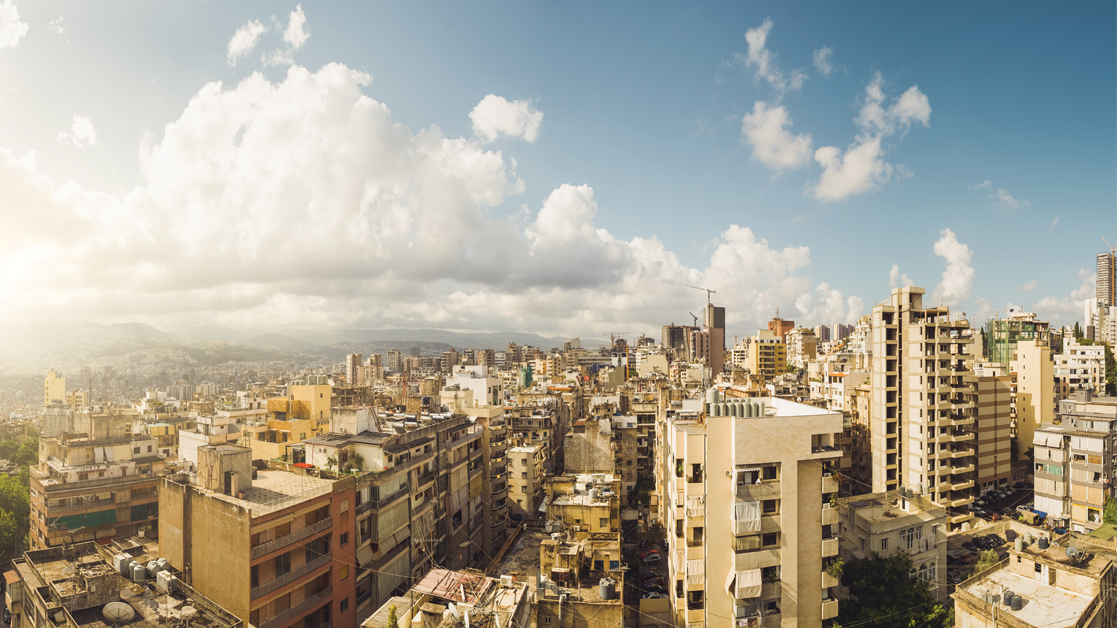Squeezed between Israel to the south, and Syria to the north and west, Lebanon has been at the centre of conflict in the Middle East for decades. Although the country is currently not at war, the presence of terrorist groups and armies on the borders, and internal armed parties, makes it apparent why Lebanon has a global reputation for strife and civil unrest. Its unique location, tightly-woven fabric of communities, interest groups and religions, combined with easily accessible weapons makes the potential for armed conflict a very real one.
Understanding the lie of the land
Lebanon is relatively advanced in terms of financial services. Compared to some countries in the MENA region, insurance penetration is high. This is in part a product of Lebanon’s traditional mercantile culture and partly due to the influence of the French who occupied much of the country between the world wars. LSM began providing cover for terrorism, SRCC (strikes, riots and civil commotion) and war in 2010 along with several other London underwriters. Our book is written out of Dubai, which also services the whole MENA region of which Lebanon is a key component.
After the civil war between 1975 and 1990, many areas self-segregated to became predominantly Christian or Muslim. However, you will also find some areas in Lebanon that are mixed such as in Beirut where certain streets will be known to support a particular party but other streets close by would be supporting an arch-rival. This is where LSM’s specialist underwriters play a big role in meticulously dissecting the streets and areas in order to have a realistic view of the risk we are undertaking.
Political awareness is also a key part of the risk picture and here again complexity is evident. Lebanon has ten major political parties but over 100 parties in all, most of which have participated in the civil war over the years. The major parties are known to have houses spread in most Lebanese cities and towns and as most influential families have political affiliations and voice their ideologies, we believe that knowing where key individuals are based and who owns which property plays a key role in assessing a risk.
For instance, consider a request to arrange cover for a hotel in the suburb of Hadath to the southwest of Beirut. On the face of it, this relatively prosperous suburb, home to the Lebanese University and just a few kilometers from the international airport, appears a productive area in which to write terrorism cover. Nothing in the databases and intelligence reports back in London would suggest otherwise. But ask a local LSM underwriter who’s recently walked the streets of Hadath and you’ll discover that at least one major militant group has its headquarters just 200m up the street from the hotel.
Complex risk environment
- Car bomb assassinations in various parts of the country; the biggest being the assassination of Prime Minister Rafic Hariri where 1,000 kg of explosives were used.
- Bombs in factories, bingo halls, hotels, malls, small villages, resorts, radio stations, busy restaurants/pubs in Beirut, barracks, check points and banks, to name a few.
- Strikes, riots and civil commotion throughout the years, the latest being in 2015 which lasted several months in downtown Beirut.
Down in the detail
When we first began underwriting in 2010, Lebanon was experiencing a more peaceful period. At that stage the main area of concern was the southern part of the country bordering Israel, the country’s main adversary at that time. Since then, hostilities have expanded to the Bekaa Valley, Lebanon’s main farming region 30km east of Beirut, and to the north where there have been several attempts by ISIS to carve out a route from Syria to the Mediterranean.
Lebanese territory represents an intricate mosaic which encompasses complex risks and exposures. This is a country where in one day the exposure could include a war with Israel, rebellions in the north, SRCC activity in various regions, terrorist threats in Beirut and the Bekaa. Such risks exist in an area of less than 10,452 sq. km – broadly equivalent to the size of Norfolk and Suffolk combined.
Currently, we believe risks are more attractive in the majority of Beirut and the central Mount Lebanon region to the east of the city, and a north-south zone between this region that houses much of the country’s business community and national infrastructure. But even in this zone, our underwriters still have to apply their ‘human Google maps’ in order to select risks that meet their appetite.
Such complexity means this is not a part of the world in which modern underwriting tools such as models and databases can be used exclusively to provide the necessary information. Our approach has been founded on using detailed local knowledge to identify those areas of the country in which the level of risk is manageable, then focusing down at street level to select specific risks.
In order to equip them with the local knowledge they need, all our underwriters spend time visiting the region, walking its streets, meeting its brokers. Even in purely cultural terms, business is done differently in Lebanon and relationships are key.
While the need to be on top of the detail in places like Lebanon is abundantly clear, we strive to apply this attention to detail and level of underwriting discipline across our global business. This is how we build the depth of understanding necessary to underwrite risk effectively and it is the foundation on which our reputation as market-makers is based.


